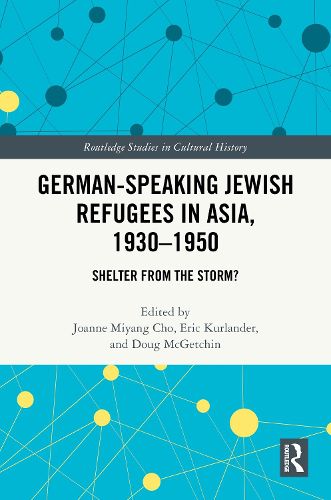Readings Newsletter
Become a Readings Member to make your shopping experience even easier.
Sign in or sign up for free!
You’re not far away from qualifying for FREE standard shipping within Australia
You’ve qualified for FREE standard shipping within Australia
The cart is loading…






Although most perished, hundreds of thousands of Central European Jews escaped the Holocaust; tens of thousands of these Jewish refugees ended up in East Asia, Southeast Asia, or South Asia. Taking a global and transnational approach, this volume examines the cultural, political, and socioeconomic encounters among and between Asian and European states and empires, Central European Jews, and Asians between 1930 and 1950, offering important case studies that address the policies toward and experiences of German-speaking Jews across East Asia, Southeast Asia, and South Asia.
The strength of this volume lies not only in its efforts to include multiple theoretical perspectives, which integrate German, Jewish, Asian, and Migration Studies, but also in the original empirical research on which it is based. Engaging directly with the rich and growing historiography on the origins, course, and consequences of the Holocaust in East, Southeast, and South Asia, this volume provides a framework in which we can better understand how global traditions of empire and colonialism matter in our efforts to understand the Holocaust, while indicating that Asian states and peoples were keenly aware of the so-called "Jewish Question" and made efforts, though widely differentiated, to provide shelter from the Nazi storm.
German-Speaking Jewish Refugees in Asia, 1930-1950 will appeal to students and scholars alike interested in the history of Jewish refugees in the twentieth century, as well as all those interested in the modern history of German-speaking Central Europe and Asia.
$9.00 standard shipping within Australia
FREE standard shipping within Australia for orders over $100.00
Express & International shipping calculated at checkout
Although most perished, hundreds of thousands of Central European Jews escaped the Holocaust; tens of thousands of these Jewish refugees ended up in East Asia, Southeast Asia, or South Asia. Taking a global and transnational approach, this volume examines the cultural, political, and socioeconomic encounters among and between Asian and European states and empires, Central European Jews, and Asians between 1930 and 1950, offering important case studies that address the policies toward and experiences of German-speaking Jews across East Asia, Southeast Asia, and South Asia.
The strength of this volume lies not only in its efforts to include multiple theoretical perspectives, which integrate German, Jewish, Asian, and Migration Studies, but also in the original empirical research on which it is based. Engaging directly with the rich and growing historiography on the origins, course, and consequences of the Holocaust in East, Southeast, and South Asia, this volume provides a framework in which we can better understand how global traditions of empire and colonialism matter in our efforts to understand the Holocaust, while indicating that Asian states and peoples were keenly aware of the so-called "Jewish Question" and made efforts, though widely differentiated, to provide shelter from the Nazi storm.
German-Speaking Jewish Refugees in Asia, 1930-1950 will appeal to students and scholars alike interested in the history of Jewish refugees in the twentieth century, as well as all those interested in the modern history of German-speaking Central Europe and Asia.